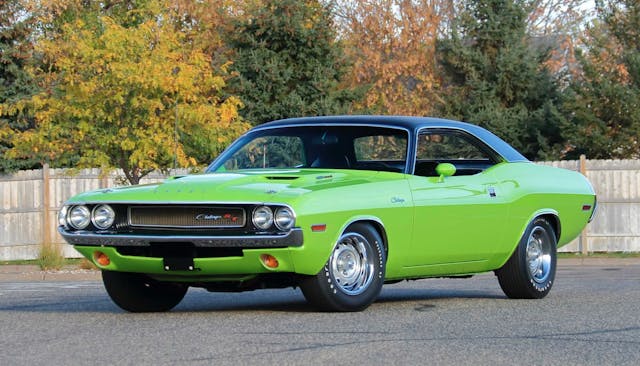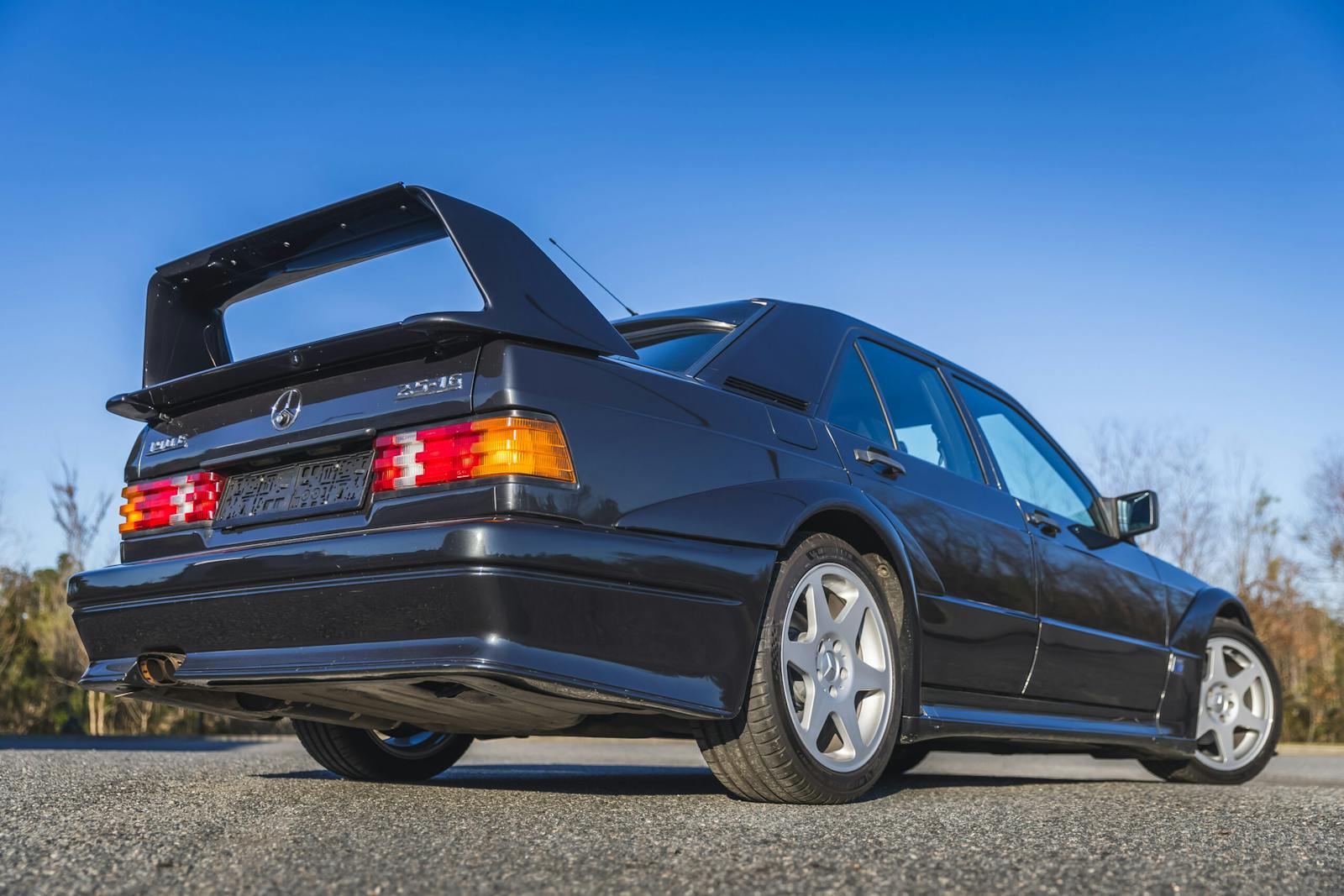Who made the most coveted muscle cars? Values suggest a victor
Peak Muscle. 1968 to 1972. Muscle cars were honed in stoplight drags on streets and strips across America. The fastest car won. Manufacturers were in on it, too: Each competed to outdo its cross-town rivals and corporate cousins. Enthusiasts then and now have debated who fielded the strongest muscle cars during this golden age.
Of course, car to car, the easiest way to find an answer is to line them up at a drag strip. Yet the conversation gets more complicated when you try to determine which manufacturer “won” the muscle car wars.
Does the highest average horsepower win? Possibly, except many cars had underrated horsepower back then. What about the highest production numbers? If small-displacement Mustangs far outnumber COPO Camaros, what does that tell us? Not much. Besides, these numbers fail to take into account the legacy of these cars—what they mean to enthusiasts.
Another solution: Study values in the collector car market to determine an overall “winner.”
The Hagerty Price Guide has more than 1900 vehicle-body-engine combinations for cars built by the Big Three for the model years 1968 through 1972. Since we’re talking about muscle cars, we zoomed in on two-door cars with V-8s. No convertibles.
Next, we lined up model years and market segments to avoid apples-to-oranges comparisons. For 1968, for instance, we compared values of the Dodge Dart to those of Plymouth Valiant, Chevrolet Nova, Ford Falcon, and Mercury Comet. We also aligned the trim levels for those, so the ’70 Charger R/T is compared to the 1970 models of the GTX, Chevelle SS 454, Buick GSX, GTO Judge, Torino Cobra, Cyclone GT, and 4-4-2 W-30. All combined, we use 26 groups of models, trims, and model years.
For each of those 26 groups, we find the most valuable vehicle from each make and rank the entries accordingly. For example, in group 6, which has the 1968 Plymouth Barracuda, 1968 Chevrolet Camaro, 1968 Pontiac Firebird, 1968 Ford Mustang, 1968 Mercury Cougar, and 1968 Shelby GT350, the Camaro is ranked first with the COPO, Pontiac second with the Ram Air II, and Ford third with the 428-cubic-inch Cobra Jet in the Mustang Fastback GT.
Finally, we averaged those ranks across all 26 groups to determine the manufacturer with the highest average.
By this specific analysis, Dodge has the most sought-after muscle cars, with an average ranking between second and third in each group. Chevrolet is just a little behind, with a ranking closer to third than second. Plymouth, Pontiac, Shelby, Oldsmobile, Ford, Mercury, and Buick follow those in that order.
The Mopar fans in the audience surely need no more convincing. For everyone else, a few rationales exist for Dodge’s high ranking. First, VINs. They’re not as sexy sounding as Hemis or as eye-catching as the High Impact colors, but the fact that Dodge had decodable, accurate identification numbers long before this became industry-wide practice is an important factor in why they tend to fetch more money. It means the bidder on, say, a 1970 Charger R/T can be sure the car in question really came from the factory with a 440 Six Pack and a four-speed manual.
Other things to consider are the sheer range of colors and options and smaller production numbers overall. Also, Dodge has a wide range of (currently) sought-after models, with the Challenger and Charger ranking well, but also the Dart and Coronet.

Dodge also benefits from being late to the pony car game. The Challenger debuted in 1970, and thus ducks the heavyweight slugfest of the 1969 Ford Mustang Boss 429 and 1969 Chevrolet Camaro COPO (the 1969 Plymouth Barracuda 440 was around and placed third).
Note we’re talking highest average ranking. Dodge doesn’t win everywhere. The 1969 Dodge Charger R/T, for instance, is second in price guide value to the 1969 Pontiac GTO Judge, while just behind those two is the 1969 Chevrolet Chevelle Malibu SS 396. Also note these rankings are based on current price guide values as of this writing. In another year with different valuations and evolving consumer interest, the crown could easily go to another manufacturer.
One more critical caveat: This is all in good fun. No metric—not dollars nor horsepower nor even quarter mile times—can possibly quantify the passion (and partisanship) people feel toward muscle cars. On that note, we’d love to hear what you think in the comments. And if you’re the sort who likes to read footnotes, you can peruse all the groups we used to determine our rankings, below.
Check out the Hagerty Media homepage so you don’t miss a single story, or better yet, bookmark it.



I really appreciate and love all muscle cars, however, it seems that AMC always gets overlooked. I had a 71 Javelin AMX with a 360/4 speed and a 68 AMX with a 390 4/speed. Both cars were real head turner’s and could hold their own with most other muscle cars. They’re cars that you rarely see at car shows but I thought that they had a unique look and were strong runners. Long live muscle cars!
I agree that the “muscle car” era started well before 1968, but it seems that many commenters here believe it ended in ’70 or ’71.
I don’t think I’ve taken my ’72 340 ‘cuda to a single show over the last 20 years where folks thought it wasn’t a muscle car. Sure, compression and HP dropped that year, but that’s (has been) VERY easily remedied. Coupled with a 3.91 rear end, I’m betting my “not really a muscle car” would hold its own against many pre-1971 “muscle cars,” especially the GTOs, tri-power or not.
I would put my 1964 Chevy Impala SS 409 up against the so called 1968 to 1970’s muscle car class.
I have owned a Cuda, Road Runner, Corvette, Grand Torino, Electra Convertible, Mustang GT Convertible, 69 Mach 1, Cougar XR-7, and several other period “Cool” Cars. I thoroughly enjoyed each and every one of them for the ride that they are. I drove them for me, not you, I had that grin that said “Yeah, I love driving this car” so articles like this mean nothing. Get what thrills you and enjoy what you have.
Not counting convertibles is not fair. If a convertible had a V-8 it should be considered. When I went to the drag strips form 67 to 71 there a lot of convertibles there and many won.
I don’t see the AMC javelin. My Big Bad Green ‘69 SST 390 4 speed 3.54 rear gears was a real barn burner.
In 1969 I turned 16, so I lived the muscle car era. One neighbor had a 1969 Torino Cobra 428 SCJ and another had a 1970 Black SS 396 -375 4spd. In 1973 I ordered my first new car, a Buccaneer Red 4 spd Trans Am. I tried to get the SD but was told they were having rod problems and wasn’t available. It might not have had the more powerful engine but the closest it ever came to getting outrun on the street was a 74 SD. My present ‘73 is a Brewster Green 4 spd, not as quick as the other but still an absolute kick to take out for a drive, the reaction I always get “I have never seen a GREEN ONE!” Only 146 were ever built!
As one who lived the “Muscle Era”, I can say for certainty, do not discount the ability of everything that was available back then. Many a battle was lost due to traction issues [remember Atlas BuCron tires ?], missed gears [both manual and automatic transmissions], blown engines, and most common, a bad tuneup.
I have witnessed Hemi’s lose to small block Chevies, big 427 Fords loose to 390 Ramblers, and others one would normally think would have the edge over their competitor.
To add insult to injury, I owned a Junkyard from 1972 through 1984, when I then sold my interest to my partner, and during that time frame, we scrapped and crushed many a muscle machine. Some items were saved, mainly complete drivetrains, but most body parts by then were either smashed or rusty, thus rendering them useless.
As a die-hard MOPAR fanatic, it broke my heart to crush 68-69 Chargers, 340 4-speed Challengers and ‘Cudas, 68-70 Super Bees, plus countless others from the 62-74 model years.
Don’t worry, muscle from the GM, Ford, and AMC camp were also parted, and when the carcasses were no longer of viable monetary worth, they were scrapped/crushed as well.
Who would have thought rust free Vega and Pinto sheet metal would be money makers ? Astounding !
Flame me all you want, but other yards were doing the same, and life went on……….
As a bright note, I still own my 1969 440 Dodge Charger SE i bought as a total in 1970, when I worked at a local body shop. The car was hit HARD in the rear, pushing the frame rails and tail lights approximately 16 inches forward. This was the first major project I ever was involved in, and as a result, the guys at that shop taught me so much that I am indebted to them to this day. As a result of this, the shop foreman [and his wife] are fast friends to this day.
Sadly, my Charger is up in the air in my shop awaiting a new engine transplant, and was not out this past year.
Next year, I plan to run the wheels off it, making up for what I missed in 2022 !
No matter what brand a guy or gal prefers, if your ride is able, get it out and enjoy it as the factories intended !
You will be glad you did !
Eric in Pennsylvania
However, business was business, and we had to maintain a turnover of inventory to stay in business.
I like them all however Pontiac is my love. Torque monsters that started the muscle car era. I have owned a number of them, my current is a 1976 Formula 4 spd. Goldenrod with the black bottom. It’s creaky and loud and smelly….love it!!
I’m not sure decodable VINs are what makes Dodges valuable. With Pontiac, PHS can provide you with build sheet data and even repro window stickers so you can verify down to the nut and bolt what any Pontiac built until the early 80s was born with.
the quickest was a mustang with a 427sohc that you had to buy after market. or if you lived in the Charlotte Nc area a Holman Moody 427sohc .it was quicker than the 454,396,427 chevy motors.quicker than 426,440 Dodge.and almost forgot the copo camaro was also beaten at the drag strip. It was the most powerful engine in the 1960’s !
MoPar by far. I could never afford the Hemis or a Charger R/T as a young man so I settled for Road Runners. A 1968 new before the army; a 1970 after the Army and in retirement the one I wish i could have afforded as a young man, a 1969 440-6 bbl with a 4-speed (as with all the others).